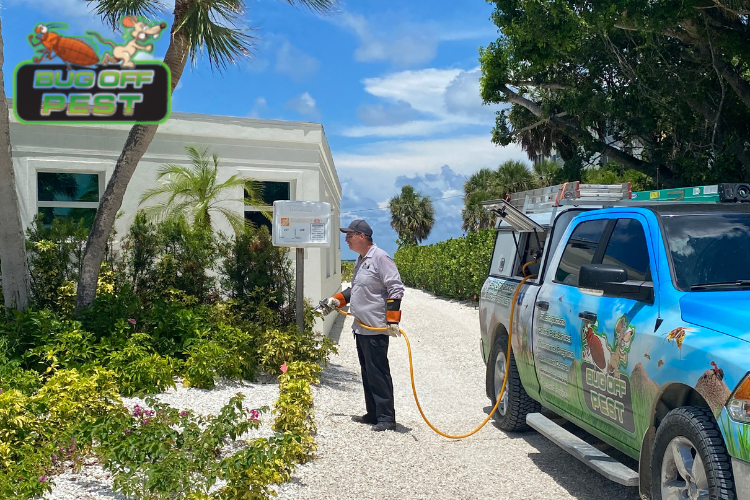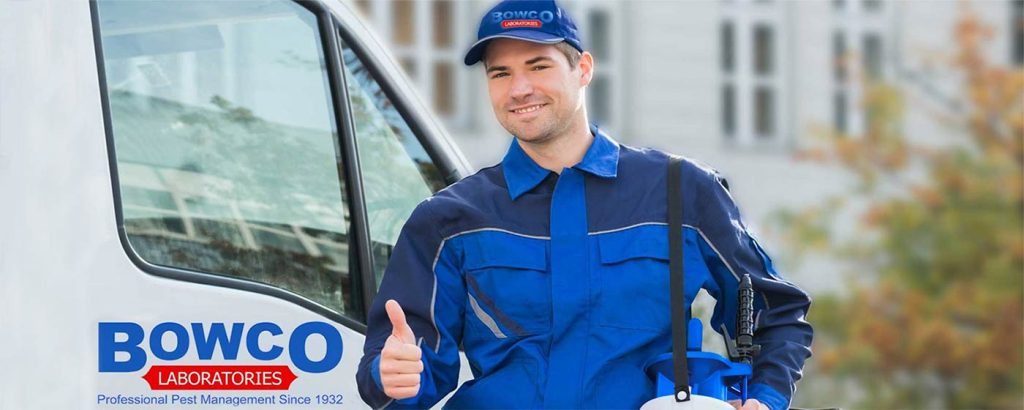Expert Rodent Control Port Charlotte to Prevent Damage to Your Property
Learn More About the current Breakthroughs in Pest Control and Exactly How to Apply Efficient Treatment Solutions
In recent years, the field of parasite control has witnessed substantial improvements, driven by the need for sustainable and reliable treatment remedies. Ingenious methods such as Integrated Parasite Administration (IPM) incorporate green practices with cutting-edge modern technology, enhancing both efficiency and environmental obligation.
Eco-Friendly Pest Control Options
In recent times, the need for green parasite control alternatives has surged as businesses and house owners alike look for sustainable alternatives to typical chemical treatments. This shift is driven by expanding ecological recognition and a need to lessen the wellness threats related to artificial chemicals.

Environment-friendly bug control techniques encompass a series of methods that focus on the usage of natural materials and methods. Integrated Insect Management (IPM) is one such strategy, combining organic, social, and mechanical strategies to take care of pest populations while decreasing reliance on chemicals (Wildlife removal services). This alternative method stresses avoidance through environment manipulation and the introduction of natural killers, thus cultivating a balanced ecological community
Another prominent option is using herb chemicals derived from plants, which tend to be much less unsafe to non-target organisms. Products like neem oil and diatomaceous planet have actually acquired traction for their effectiveness in controlling bugs while posturing very little threats to human wellness and the environment.
Furthermore, exemption techniques, such as sealing access factors and maintaining tidiness, play an essential function in environment-friendly parasite administration. By taking on these sustainable practices, businesses and individuals can properly take care of pests while promoting a healthier earth for future generations.
Smart Technology in Insect Monitoring
Technology is reshaping the landscape of parasite monitoring, with smart modern technology becoming a pivotal force in boosting performance and effectiveness - Wildlife removal services. The integration of Internet of Things (IoT) tools, expert system (AI), and information analytics is changing just how parasite control specialists come close to infestations
Smart traps geared up with sensing units can detect bug task in real-time, sending instant signals to operators. This permits timely responses, minimizing damage and lowering the need for comprehensive treatments. Additionally, AI formulas examine historic data to predict pest actions, allowing positive interventions based upon environmental conditions and problem patterns.
Drones and computerized automobiles are likewise playing a substantial duty in parasite administration, offering airborne evaluations of large areas, recognizing hotspots, and even dispersing targeted therapies. These technologies not only enhance operations but likewise enhance safety by limiting human direct exposure to potentially harmful chemicals.
In addition, mobile applications equip consumers to check bug activity and accessibility expert suggestions, fostering a joint approach to pest management. Overall, the fostering of wise technology is establishing a new requirement in pest control, highlighting data-driven choices and sustainable techniques that eventually profit both specialists and property owners alike.
Integrated Bug Management Methods
Integrated Pest Monitoring (IPM) employs an alternative approach to pest control, incorporating numerous approaches to effectively manage insect populations while reducing risks to human wellness and the setting. IPM revolves around comprehending the pest life process, their all-natural enemies, and the environment in which they grow.
Among the basic elements of IPM is keeping an eye on pest populations with normal inspections and data collection. This allows for the identification of bug limits, determining when intervention is required. Cultural techniques, such as crop sanitation, habitat, and turning adjustment, are necessary in lowering pest prevalence and advertising plant wellness.
Mechanical controls, consisting of barriers and traps, are also vital in IPM. These approaches can physically eliminate or discourage insects without making use of chemicals. When necessary, the judicious application of chemical controls is used, concentrating on targeted therapies that decrease ecological effect.
Education and partnership among stakeholders, consisting of farmers, bug control experts, and the community, are important for the effective execution of IPM strategies. By prioritizing sustainable techniques, IPM not just addresses pest concerns but also cultivates a much healthier ecological community.
Biological Control Techniques
Various biological control methods are increasingly recognized for their performance in taking care of insect populations while advertising ecological equilibrium. These approaches harness natural predators, parasites, and virus to decrease pest numbers without depending on artificial chemicals. For example, the introduction of ladybugs can properly manage aphid populations, while nematodes target soil-dwelling bug larvae.
In addition, using microbial chemicals, such as Bacillus thuringiensis (Bt), gives an eco-friendly choice for taking care of caterpillar bugs. These items particularly target pest varieties, reducing damage to useful pests and pollinators. Conservation biological control emphasizes improving habitats for natural enemies, such as birds and helpful pests, consequently motivating their existence in farming systems.
Study remains to disclose cutting-edge methods within this field, such as making use of pheromones to visit this web-site disrupt pest mating patterns or the growth of biocontrol representatives through genetic modification. Carrying out these approaches can bring about sustainable pest administration methods that alleviate the dependence on chemical treatments, eventually cultivating healthier ecosystems. As recognition of these methods grows, they are ending up being integral components of integrated pest management (IPM) strategies, supplying a balance in between effective pest control and ecological stewardship.
Do It Yourself Bug Control Solutions
As property owners seek effective ways to take on parasite problems, DIY insect control services have obtained appeal for their access and cost-effectiveness. These approaches encourage people to deal with infestations making use of conveniently offered products and techniques, frequently without the need for specialist treatment.
:max_bytes(150000):strip_icc()/GettyImages-1406458401-c326873c5dcf400dab30717b9b4e596a.jpg)
Furthermore, keeping appropriate cleanliness and routine evaluations can stop bug access and nesting (Wildlife removal services). Easy methods, such as sealing cracks, eliminating food resources, and decluttering, can dramatically lessen pest populations. Traps, both homemade and readily readily available, can additionally supply reliable options for tracking and regulating specific bugs like bugs or rodents

Conclusion
The assimilation of green parasite control choices, smart modern technology, and cutting-edge administration methods presents a comprehensive strategy to efficient insect monitoring. By welcoming Integrated Insect Monitoring (IPM) and making use of biological control approaches, along with DIY solutions, sustainable and responsible bug control can be attained. These improvements not just enhance the efficiency of bug monitoring practices however also add to a healthier setting. Applying these methods promotes a balanced environment while successfully resolving pest populations.
Eco-friendly insect control approaches include a variety of approaches that try this website prioritize the usage of all-natural compounds and methods. Integrated Pest Management (IPM) is one such strategy, integrating organic, social, and mechanical strategies to take care of bug populaces while reducing dependence on chemicals. As understanding of these methods grows, they are ending up being integral parts of integrated pest management (IPM) methods, offering a balance in between efficient parasite control and environmental stewardship.
The combination of green parasite control alternatives, smart technology, and cutting-edge monitoring methods offers an extensive method to effective pest management. By accepting Integrated Pest Administration (IPM) and making use of organic control approaches, alongside DIY services, liable and sustainable pest control can be accomplished.